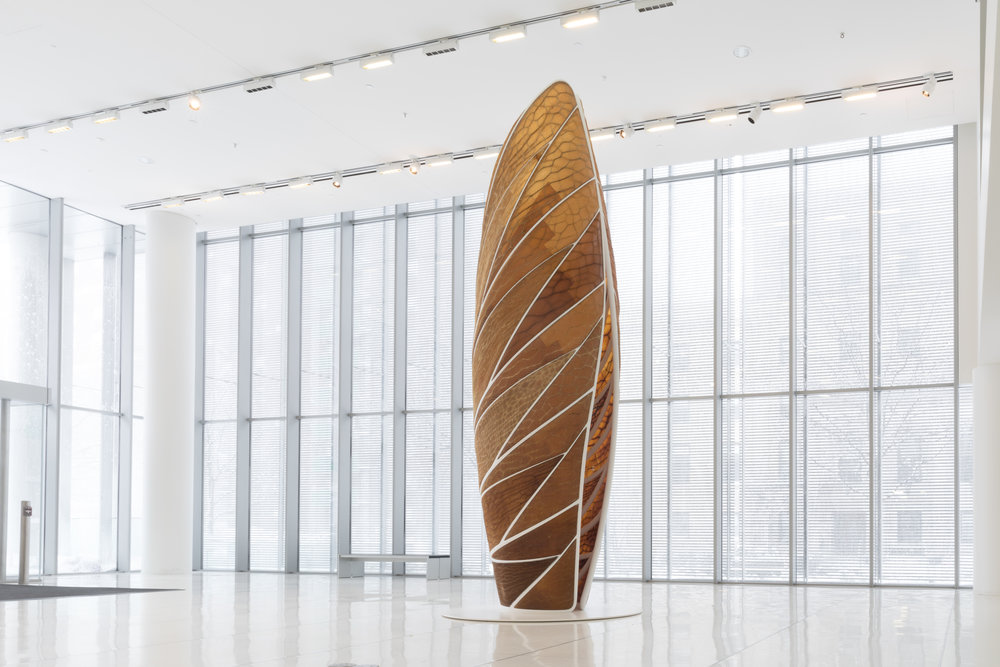Couple of days ago, I watched a Netflix Documentary about designers and artist around the world. All of the parts are inspired, but one of them caught my attention the most. It is called “Bio-Architektur mit Neli Oxman”.
Neli Oxman — is an American–Israeli designer and professor at the MIT Media Lab, where she leads the Mediated Matter research group. She is known for art and architecture that combine design, biology, computing, and materials engineering.
Oxman writes about the world and environment as organisms, changing regularly and responding to use, full of gradients of color and physical properties rather than sharp boundaries. She proposed developing a material ecology with “holistic products, characterized by property gradients and multi-functionality” – in contrast to assembly lines and “a world made of parts”.
The innovations developed by Oxman and her team have enabled a new age of ‘biological alchemy’ whereby micro-organisms can be designed to mimic ‘factories’ and materials strategically augmented at their basic biological properties. These technologies offer a radical new approach to design and production in which almost any biomass can be transformed into biomaterials to be used for a variety of purposes, from the production of wearable garments to the construction of buildings. For example, E coli, a bacterium that lives in the gut, can be transformed into edible sugar; grass converted into diesel; and corn transfigured into plastic.
In this particular film she was working on the Aguahoja project. The aim of the product is to show the use of alternative materials, instead of plastic. The Aguahoja collection (pronounced: agua-hocha) offers a material alternative to plastic subverting the toxic waste cycle through the creation of biopolymer composites that exhibit tunable properties with varied mechanical, optical, olfactory and even gustatory properties. These renewable and biocompatible polymers leverage the power of natural resource cycles and can be materially ‘programed’ to decay as they return to the earth, for purposes of fueling new growth.
Neri Oxman is using another way: organic structures embody more efficient and adaptable material properties compared with human-made ones, and leave no environmental marks. From a limited palette of molecular components, including cellulose, chitin, and pectin―the very same materials found in trees, crustaceans and apple skins―natural systems construct an extensive array of functional materials with no synthetic parallels.
Chitin, for instance, manifests in the form of thin, transparent dragonfly wings, as well as in the soft tissue of fungi. Cellulose makes up more than half of plant matter planet-wide. These materials, and the living systems they inhabit, outperform human engineering not only through their diversity of functions but also through their resilience, sustainability, and adaptability.

“Imagine the possibility of being able to create a digitally-printed, biologically-augmented beating heart that will perfectly match its host, for those in need of a transplant. There is then new potential to save millions of lives.”











